Global, regional, and national burden of HIV and tuberculosis and predictions by Bayesian age-period-cohort analysis: a systematic analysis for the global burden of disease study 2021
- PMID: 39720120
- PMCID: PMC11666487
- DOI: 10.3389/frph.2024.1475498
Global, regional, and national burden of HIV and tuberculosis and predictions by Bayesian age-period-cohort analysis: a systematic analysis for the global burden of disease study 2021
Abstract
Objective: To assess sex, age, regional differences, and the changing trend in human immunodeficiency virus and tuberculosis (HIV-TB) in different regions from 1990 to 2021, and project future trends.
Methods: Global Burden of Disease Study 2021 data were analyzed to assess HIV-TB incidence, death, prevalence, and DALY rates from 1990 to 2021, including different types of TB co-infections (drug-susceptible, multidrug-resistant, and extensively drug-resistant). Bayesian age-period-cohort models were used to forecast age-standardized DALY rates through 2035.
Results: In 2021, there were approximately 1.76 million HIV-TB infections and 200,895 deaths globally. The highest burden of HIV-DS-TB and HIV-MDR-TB was found in Southern Sub-Saharan Africa, while HIV-XDR-TB was most prevalent in Eastern Europe. The co-infection burden was highest among individuals aged 30-49. Key risk factors were unsafe sex, drug use, and intimate partner violence, with regional variations. The global burden of HIV-TB remains high, and age-standardized DALY rates are expected to increase in the coming years, especially in regions with low socio-demographic indices (SDI).
Conclusion: The burden of HIV-TB co-infection correlates with the socio-demographic index (SDI): countries with a low SDI have a higher burden. Therefore, clinical diagnosis and treatment in such areas are more challenging and may warrant more attention. High death rates underscore the importance of early management.
Keywords: Bayesian age-period-cohort; age-standardized rate; disability-adjusted life years; disease burden; human immunodeficiency virus and tuberculosis.
© 2024 Tian, Wang, Hao, Chen and Wu.
Conflict of interest statement
The authors declare that the research was conducted in the absence of any commercial or financial relationships that could be construed as a potential conflict of interest.
Figures
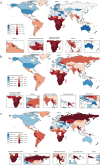
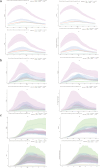

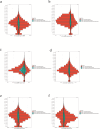
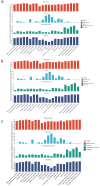
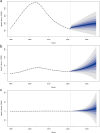
Similar articles
-
Global trends, regional differences and age distribution for the incidence of HIV and tuberculosis co-infection from 1990 to 2019: results from the global burden of disease study 2019.Infect Dis (Lond). 2022 Nov;54(11):773-783. doi: 10.1080/23744235.2022.2092647. Epub 2022 Jul 7. Infect Dis (Lond). 2022. PMID: 35801264
-
Global, regional, and national burden of HIV-negative tuberculosis, 1990-2021: findings from the Global Burden of Disease Study 2021.Infect Dis Poverty. 2024 Aug 19;13(1):60. doi: 10.1186/s40249-024-01227-y. Infect Dis Poverty. 2024. PMID: 39155365 Free PMC article.
-
Global burden of HIV-negative multidrug- and extensively drug-resistant tuberculosis based on Global Burden of Disease Study 2021.Sci One Health. 2024 Jul 4;3:100072. doi: 10.1016/j.soh.2024.100072. eCollection 2024. Sci One Health. 2024. PMID: 39763639 Free PMC article.
-
Analysis of global prevalence, DALY and trends of inflammatory bowel disease and their correlations with sociodemographic index: Data from 1990 to 2019.Autoimmun Rev. 2024 Nov;23(11):103655. doi: 10.1016/j.autrev.2024.103655. Epub 2024 Oct 2. Autoimmun Rev. 2024. PMID: 39366514 Review.
-
Epidemiology and disease burden of tuberculosis in children: a global perspective.Infect Drug Resist. 2014 Jun 18;7:153-65. doi: 10.2147/IDR.S45090. eCollection 2014. Infect Drug Resist. 2014. PMID: 24971023 Free PMC article. Review.
References
-
- Ma J, Vongpradith A, Ledesma JR, Novotney A, Yi S, Lim K, et al. Progress towards the 2020 milestones of the end TB strategy in Cambodia: estimates of age and sex specific TB incidence and mortality from the global burden of disease study 2019. BMC Infect Dis. (2022) 22(1):904. 10.1186/s12879-022-07891-5 - DOI - PMC - PubMed
LinkOut - more resources
Full Text Sources

